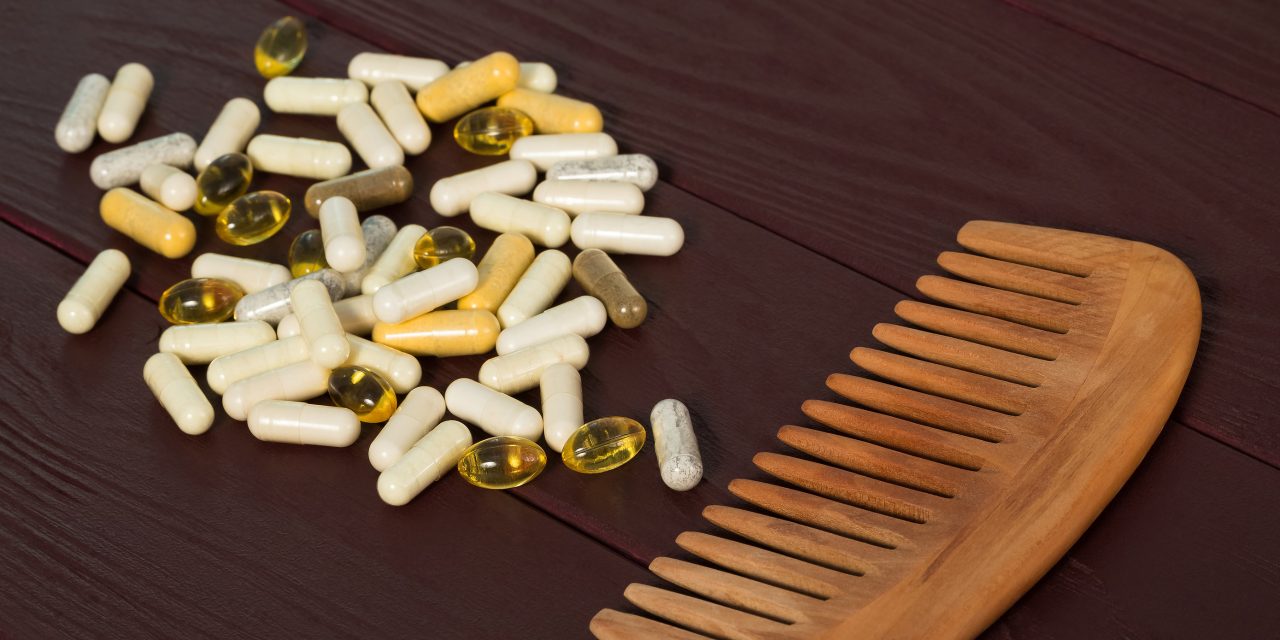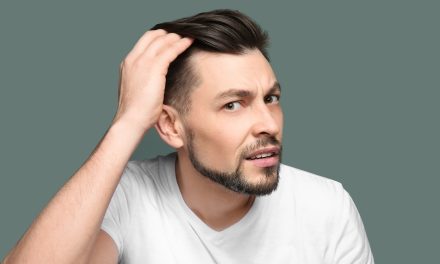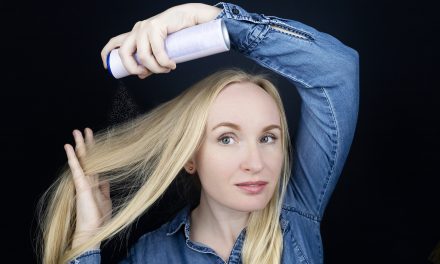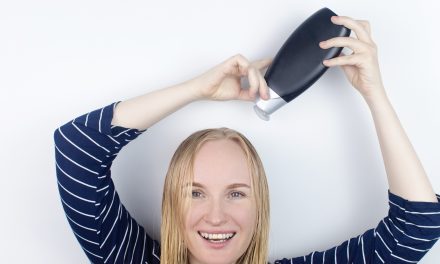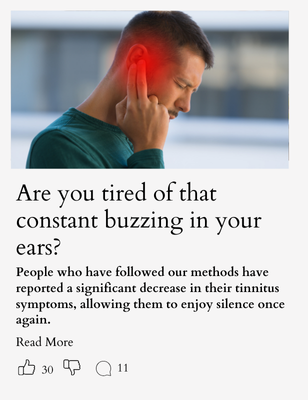Losing hair after chemotherapy can be distressing for cancer patients. As a side effect of chemotherapy drugs attacking rapidly growing cancer cells, it can also target hair cells, leading to hair loss and thinning. While this is often temporary, finding the right supplements to aid in hair regrowth and enhance overall hair health is essential for comfortably transitioning back to your desired hairstyle.
There are numerous supplements and treatments available to help minimize hair loss after chemotherapy and promote regrowth. While results may vary, incorporating specific supplements into your hair care routine may help speed up the recovery process. Apart from supplements, some patients have found success in using cooling caps during their treatments to mitigate hair loss, while others explore alternative topical solutions.
Key Takeaways
- Hair loss after chemotherapy is a common side effect, and supplements can aid in regrowth and overall hair health.
- A variety of treatments, including cooling caps and topical solutions, may assist in minimizing hair loss.
- Professional care, hair adornments, and support systems can help patients cope with the psychological impact of hair loss.
Understanding Hair Loss Post-Chemotherapy
The Link Between Chemo and Hair Loss
Chemotherapy is a cancer treatment that involves using powerful drugs to target rapidly dividing cells in the body. While chemotherapy can help kill cancer cells, it can also affect healthy cells, such as hair follicles. Hair loss is a common side effect of chemotherapy as hair follicles are sensitive to the treatments and can be damaged during the process.
Not all chemotherapy drugs will cause hair loss, but many do. The severity of hair loss may vary depending on the drugs used and the individual’s response to the treatment. It is important to discuss potential side effects with a doctor before undergoing chemotherapy.
Some tips for managing hair loss during and after chemotherapy include:
- Using gentle hair care products and avoiding harsh treatments, such as dyes or perms.
- Preparing for hair loss by purchasing head coverings or exploring options for hairpieces
- Exploring scalp cooling treatments to potentially reduce hair loss during chemotherapy.
Potential Changes to Hair Texture and Color
After completing chemotherapy, many individuals notice that their hair starts growing back within a few months. However, the texture and color of the regrowing hair may be different from what they had before treatment.
Some common changes in hair texture and color include:
- Hair growing back finer or more fragile
- Hair becoming curly or wavy when it was previously straight
- Changes in hair color, such as graying or a different shade.
It is important to note that these changes are often temporary and hair may return to its original texture and color over time. Nonetheless, using gentle hair care products and being patient with regrowth can help individuals manage these changes and feel more confident during the recovery process.
Footnotes
Effective Hair Regrowth Supplements
The Role of Biotin in Hair Health
Biotin, also known as vitamin H or vitamin B7, is one of the key nutrients essential for maintaining healthy hair and supporting hair regrowth after chemotherapy. This water-soluble vitamin plays a crucial role in keratin production, which is the primary structural component of hair, skin, and nails. A deficiency in biotin may lead to hair thinning and even hair loss.
Including a biotin supplement in your daily routine is a simple way to promote hair regrowth after chemotherapy. Biotin supplements are available in various forms, such as capsules, tablets, and gummies. A daily dosage of 2,500 to 5,000 micrograms is generally recommended for hair health, but be sure to consult your healthcare provider before starting any new supplement regimen.
Vitamins and Minerals for Hair Regrowth
In addition to biotin, various vitamins and minerals can help support hair regrowth after chemotherapy. Here are some key nutrients to consider:
- Vitamin C: This powerful antioxidant helps protect hair follicles from damage caused by free radicals, which can potentially slow hair growth. Furthermore, vitamin C aids in collagen synthesis, an essential protein that helps strengthen hair.
- Vitamin D: Research indicates that vitamin D may play a role in the regulation of hair follicle growth and development. Ensuring adequate vitamin D levels can help support hair regrowth after chemo.
- Iron: Iron is a mineral critical for hair growth, as it helps deliver oxygen and nutrients to hair follicles. A deficiency in iron can lead to hair loss, making it important to include iron-rich foods or supplements in your diet.
- Zinc: Zinc is essential for hair regrowth, as it contributes to cell division, DNA synthesis, and protein production, all of which are vital processes for hair growth. Including a zinc supplement in your daily routine can aid in hair regrowth after chemotherapy.
- Minoxidil: While not a vitamin or mineral, minoxidil is a topical solution that has been shown to promote hair regrowth in individuals experiencing hair loss. It works by increasing blood flow to the hair follicles, stimulating hair growth. Minoxidil is widely available as an over-the-counter treatment and can be a valuable addition to your hair regrowth strategy.
To support hair regrowth after chemotherapy, consider incorporating these essential vitamins, minerals, and supplements into your daily routine. Be sure to consult with your healthcare provider before starting any new supplement regimen to ensure it is safe and appropriate for your specific needs.
Hair Care and Styling Post-Treatment
Appropriate Shampoo and Conditioner Choices
Once your hair starts to regrow after chemotherapy, it’s crucial to select the right shampoo and conditioner. These products need to be gentle on your hair and scalp. Opt for sulfate-free shampoos, as they can help in avoiding irritation. Additionally, search for hair products that are specifically formulated to meet the needs of chemo-recovered patients’ hair texture, like those mentioned in the article from Everyday Health.
Finding a conditioner that best suits your hair texture is important too. Look for lightweight, moisturizing ones with nourishing ingredients to ensure your hair receives the best possible treatment. You could also experiment with leave-in conditioners to make hair management more comfortable.
Gentle Hair Styling Tips
Chemotherapy-induced hair changes can lead to different levels of growth and texture. According to Verywell Health, hair regrowth may be uneven initially and exhibit a curly or wavy appearance. Therefore, gentle hair care practices are necessary during this phase of recovery.
Avoid harsh treatments: Refrain from using textures or perms in the early stages of hair regrowth, as these treatments can be damaging to the delicate, new hair. Stick to a minimal approach regarding chemical treatments and heat styling.
Use gentle styling products: Aim for lighter products that are water-soluble to avoid building up on your scalp. Avoid products with alcohols that might dry out the hair, causing breakage.
Protect your hair: Wrap your hair in a silk or satin scarf when sleeping to prevent friction and breakage. Similarly, protect your hair from sun exposure with a hat or other coverage.
Patience is key: Understand that it takes time for your hair to regain its pre-treatment thickness and appearance. Adopting a confident, patient, and gentle approach will ensure your hair grows back healthy and strong.
Managing Temporary Hair Thinning and Baldness
Coping with Partial Hair Thinning
For many chemotherapy patients, partial hair thinning is a common temporary side effect. One way to manage this is by using scalp care products designed to nurture and promote healthy hair growth. Additionally, consider switching to a gentler shampoo and avoid over-brushing or over-styling to minimize stress on your hair.
To cover thinning areas, many people opt for hats, scarves, or turbans. These accessories not only help conceal hair loss but also provide sun protection and warmth. Experiment with various styles and materials to find one that complements your aesthetic and feels comfortable.
Here are some suggestions:
- Hats: Wide-brimmed hats, beanies, and baseball caps can offer coverage and personality.
- Scarves: Lightweight cotton, silk, or linen scarves can be wrapped and tied in numerous ways to create elegant and versatile looks.
- Turbans: Crafted from soft, stretchy material, turbans resemble headwraps and provide full coverage with a chic twist.
Strategies for Dealing With Complete Baldness
For those experiencing complete baldness, wigs can be a popular and effective solution. Before you purchase a wig, take some time to research wig materials, styles, and care requirements. It’s essential to select a wig that fits your head shape, skin tone, and personal preferences.
Here are some wig selection tips:
- Material: Wigs can be made from synthetic hair or natural human hair. While synthetic wigs may be more affordable and low-maintenance, human hair wigs tend to look more realistic and can be styled with hot tools.
- Style: Choose a style that replicates your natural hair or use this opportunity to experiment with a completely new look.
- Fit: Consult with a professional stylist or wig fitter to ensure a comfortable, secure fit.
Alternatively, you may choose to embrace your baldness and forgo hair coverings altogether. This decision is entirely personal and depends on how you feel about your appearance and comfort level.
In summary, managing temporary hair thinning and baldness after chemotherapy involves using appropriate hair care practices, accessorizing with hats, scarves, or turbans, and considering wigs if necessary. It’s essential to find strategies that make you feel confident and comfortable during your recovery process.
Cold Cap Therapy: Minimizing Hair Loss
Understanding Scalp Cooling Caps
Scalp cooling caps, also known as cold caps, are a type of headgear used by patients undergoing chemotherapy to minimize hair loss. These caps work by reducing the blood flow to hair follicles and by lowering the temperature on the scalp, thereby limiting the absorption of chemotherapy drugs that contribute to hair loss. Cold caps come in a variety of designs and materials, with the goal of maintaining a consistent temperature throughout the treatment session.
The idea of using scalp cooling to reduce hair loss during chemotherapy has been around for some time. The main principle behind this technology is scalp hypothermia, which involves cooling the scalp with ice packs or cooling cap systems for a specific period before, during, and after each chemotherapy treatment to reduce hair loss.
Efficacy and Procedure of Cold Cap Therapy
Studies have shown that cold cap therapy can be quite effective in reducing hair loss caused by chemotherapy. According to the Mayo Clinic, using a cold cap can significantly reduce hair loss, with some minor side effects, but no serious ones associated with the therapy.
During a cold cap therapy session, the patient wears a fitted cap that contains a cooling agent or a cold gel pack. The cap is typically worn:
- 30 minutes before the chemotherapy session
- During the entire chemotherapy infusion
- For a specified time after the chemotherapy session
It is crucial to maintain consistent cooling during the therapy to achieve the best results. The effectiveness of cold cap therapy varies depending on individual factors such as the specific chemotherapy drugs and doses, the duration and frequency of treatment, and the patient’s hair type and condition.
Benefits of Cold Cap Therapy:
- Minimizes hair loss during chemotherapy
- Maintains patient’s self-esteem and confidence
- Reduces the emotional impact of chemotherapy on patients
Although cold cap therapy provides a valuable option for many patients looking to minimize hair loss during their chemotherapy treatments, it is essential to consult a healthcare professional to determine if the therapy is suitable and safe as per the patient’s unique circumstances. The procedure may not be recommended for patients with specific types of cancer or certain pre-existing conditions.
Alternatives to Supplements: Topical Treatments and Medications
In addition to nutritional supplements, there are other options available for individuals experiencing hair loss after chemotherapy. Topical treatments and medications are some of the most effective alternatives, which have been proven to promote hair growth and recovery.
Topical Minoxidil for Hair Growth
One popular and well-known treatment is topical minoxidil, often found under the brand name Rogaine. Minoxidil is an FDA-approved over-the-counter medication, primarily used to treat pattern baldness and hair loss caused by various conditions. Here’s an overview of how minoxidil works:
- Application: Minoxidil is applied directly to the affected areas of the scalp, generally twice a day.
- Effectiveness: Many people experience positive results using minoxidil. However, it might not work for everyone and should be used consistently for at least three to four months to see any noticeable improvement.
- Side Effects: Some users may experience dryness, itching, and redness on their scalps. Discontinue use and consult your doctor if these symptoms persist or worsen.
It is important to keep in mind that while minoxidil may aid in hair growth after chemotherapy, it will not address the underlying cause of hair loss.
Prescription Medications for Hair Recovery
For more aggressive treatment, patients can consult their doctor about prescription medications. Some effective options include:
- Oral Finasteride (Propecia): Finasteride is used to treat male pattern baldness and is available by prescription. It works by preventing testosterone from being converted into the hormone-fueled hair loss molecule, dihydrotestosterone (DHT). Notably, finasteride is not FDA-approved for women as it may cause birth defects.
- Oral Spironolactone: Spironolactone is an aldosterone antagonist, typically used to treat high blood pressure. It has been found to help with hormonal hair loss in women, acting as an anti-androgen medication that can slow down hair shedding.
- Corticosteroids: In some cases, corticosteroids can be prescribed for temporary and reversible hair loss, as they can modulate immune response, reducing inflammation and promoting hair regrowth.
Always consult a healthcare professional before starting any medication. Each medication has its own set of side effects and potential complications, and it is crucial to work with a doctor to determine which treatment is best suited for individual circumstances.
Alternative Hair Solutions and Adornments
Choosing a Wig or Hairpiece
During and after chemotherapy, individuals might consider using a wig or hairpiece to help them feel more confident and comfortable. When selecting a wig, consider the following points:
- Material: Wigs can be made from synthetic fibers or natural human hair. Synthetic wigs are generally less expensive and easier to maintain, while human hair wigs offer a more natural look and feel.
- Style: Choose a hairstyle that compliments your face shape and personal style. This might be an opportunity to experiment with a new look or stick to something familiar.
- Fit and Comfort: Make sure to select a wig that fits well and feels comfortable to wear throughout the day. Many wigs have adjustable straps for a customized fit.
- Maintenance: Proper care is crucial for maintaining the appearance and longevity of your wig. Follow the manufacturer’s instructions for cleaning and storing your wig.
Options for Head Coverings
In addition to wigs, there are several other types of head coverings that can be used after hair loss due to chemotherapy. Consider the following options:
- Scarves: A versatile and stylish option, scarves can be tied in various ways to create different looks. Opt for soft, breathable materials like cotton or silk.
- Hats: From casual baseball caps to elegant sunhats, hats come in a variety of styles and materials suitable for different occasions and weather conditions.
- Turbans: A comfortable and easy-to-wear option, turbans are available in various patterns and colors to suit individual preferences.
Choose head coverings that reflect your personal style and offer comfort, as well as protection from the sun and cold temperatures. Experimenting with different types of headwear can help you find the right solution for your needs and preferences during and after chemotherapy.
Psychological Impact of Hair Loss and Support Available
Addressing Emotional and Psychological Concerns
Hair loss due to chemotherapy can be a distressing experience, leading to anxiety, depression, and a negative body image. Therefore, addressing emotional and psychological concerns is vital for overall well-being. To manage stress, patients can engage in stress-relieving activities like meditation, yoga, and physical exercise. Additionally, discussing their concerns with family members, friends, or a social worker can help them gain emotional support.
Nurturing a positive attitude towards their appearance is an essential step towards coping with hair loss. One way to feel more confident is by participating in the Look Good Feel Better program. This initiative offers practical workshops to teach cancer patients how to enhance their appearance using various techniques, such as makeup, skincare, and headwear options. By improving their image, people can regain a sense of control and boost their self-esteem.
Finding Support from Groups and Counseling
As the psychological impact of hair loss can be overwhelming, seeking support from others in similar situations can be beneficial. Joining a support group allows patients to share their experiences and concerns with others who understand their struggles. These groups can provide emotional comfort, practical advice, and a sense of belonging.
Aside from support groups, it might be helpful to seek professional counseling. A licensed therapist or counselor, experienced in dealing with cancer-related hair loss, can provide coping strategies and help patients navigate their emotions during this challenging period.
In conclusion, recognizing and addressing the psychological impact of hair loss is essential for maintaining emotional well-being during and after chemotherapy. By engaging in stress-management activities, seeking support from family, friends, support groups, or counseling, and participating in the Look Good Feel Better program, patients can better cope with this unfortunate side effect of cancer treatment.
Professional Care and Advice
Consulting with a Dermatologist
After chemotherapy, hair loss can be a concern for many patients. Consulting with a dermatologist can provide personalized guidance on which supplements may be best to promote hair regrowth and support overall hair health. Dermatologists are experts in skin and hair conditions, and they can recommend specific treatments or products based on individual needs.
In addition to supplements, dermatologists may suggest other interventions to facilitate hair regrowth, such as topical treatments or laser therapy. It is essential to follow the dermatologist’s recommendations and American Cancer Society guidelines to ensure the most effective results.
Communication with Your Cancer Care Team
Maintaining open communication with your cancer care team is crucial during and after chemotherapy. Consulting with your care team regarding hair loss can provide insights into the particular chemotherapy drugs used and their potential side effects on hair growth.
Your care team can also help monitor your overall health and advise on whether specific supplements or treatments are appropriate for your situation. They may even have recommendations for reputable brands or products that they have seen success with in other patients.
Here are some potential supplements that may be discussed:
- Biotin: A B-vitamin known for promoting hair and nail growth
- Vitamin D: Can help create new hair follicles and maintain hair health
- Iron: Supports healthy hair growth by assisting in the production of essential proteins for hair maintenance
- Zinc: Helps in hair tissue growth and repair, keeping the oil glands surrounding the hair follicles working correctly
Remember, it is crucial to consult with your doctor or cancer care team before starting any supplements, as they can provide the most accurate recommendations based on your individual health status and medical history. They are the best resource for any questions or concerns related to hair loss after chemotherapy.
Considerations for Special Cases and Treatments
Effects of Radiation Therapy on Hair Loss
Radiation therapy, particularly when used for treating breast cancer, can cause hair loss on the scalp, eyebrows, and eyelashes. Hair loss may occur only in the area exposed to radiation, so it may not be as extensive as hair loss resulting from chemotherapy. The severity of hair loss depends on the dosage and duration of radiation treatment, as well as individual factors. In some cases, hair may grow back differently or not at all after radiation therapy .
Hair Loss After Surgery or Immunotherapy
Hair loss after surgery or immunotherapy may not be as common as with chemotherapy or radiation therapy. However, some immunotherapy drugs, particularly for the treatment of breast cancer, can cause hair thinning as a side effect. Endocrine therapy, another treatment option for breast cancer, may lead to hair thinning, but it is generally not as severe as with chemotherapy or radiation therapy.
In conclusion, the severity and duration of hair loss after cancer treatment depend on the type of treatment and individual factors. Patients undergoing chemotherapy, radiation therapy, and endocrine therapy may experience hair loss and should consider which supplements and strategies could best minimize this side effect.
Frequently Asked Questions
What nutrients support hair regrowth after chemotherapy?
Various nutrients play a crucial role in supporting hair regrowth after chemotherapy. Protein is essential as it is the primary component of hair strands. Iron helps improve blood circulation, ensuring that hair follicles receive enough nutrients to grow healthily. Additionally, omega-3 fatty acids, zinc, and vitamins A, C, and E contribute to maintaining a healthy scalp and promoting hair growth .
Are there any vitamins known to boost hair recovery post-chemo?
Vitamins play a significant role in hair recovery. Biotin (vitamin H or B7) is widely known for its positive effects on hair growth. Other B-vitamins like B1, B2, B3, B5, B6, and B12 support healthy hair and reduce hair loss. Vitamins A, C, D, and E also contribute to hair health by promoting cell regeneration, collagen production, antioxidant protection, and immune function, respectively .
What foods are beneficial for hair regrowth following chemotherapy?
Including nutrient-rich foods in your diet helps support hair regrowth following chemotherapy. Foods high in protein like lean meats, fish, eggs, and soy products can help restore hair strength. Whole grains, legumes, and beans provide essential B-vitamins, iron, and zinc. Eating fruits and vegetables rich in vitamins A, C, and E will help maintain overall hair health. Foods like walnuts, almonds, and flaxseeds are great sources of omega-3 fatty acids that nourish the scalp and promote hair growth .
Is biotin intake safe and effective for hair growth after undergoing chemo?
Biotin is generally safe and effective for hair growth after chemotherapy. Biotin intake can help improve hair thickness, texture, and overall health. However, it is crucial to consult your healthcare provider before starting any supplementation, especially during or after cancer treatment, as individual requirements and potential drug interactions should be considered .
How can natural remedies aid in preventing hair loss during chemotherapy?
Some natural remedies may help prevent hair loss during chemotherapy, although their effectiveness can vary. Scalp cooling or cryotherapy is a non-invasive technique that involves wearing a cooling cap during chemotherapy sessions to constrict blood vessels, preventing most of the chemo drugs from reaching the hair follicles and thus reducing hair loss. Other remedies like gentle scalp massages using essential oils like lavender, rosemary, or thyme could potentially help by improving blood circulation and encouraging hair follicle stimulation .
What considerations should be made before taking hair supplements concurrently with chemotherapy?
Before taking hair supplements during chemotherapy, it is crucial to discuss with your healthcare provider to evaluate any potential interactions or adverse effects. Some supplements may interfere with chemotherapy drugs or cause unwanted side-effects. It is essential to consider individual nutritional needs, the type of chemotherapy drugs administered, and any existing health conditions before starting any supplementation.

